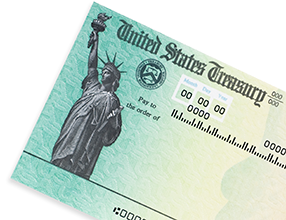Another round of stimulus payments will greet many of you in January thanks to a new COVID relief package enacted by Congress in December. Read about who qualifies for these latest relief payments, along with other benefits appearing in the bill including an extension of unemployment benefits and more financial assistance for businesses.

Direct stimulus payments to you. The legislation includes a $600 payment per person, including adults and dependent children who are under age 17. Payments are based on your 2019 income and should start being distributed shortly, per Treasury Secretary Mnuchin. The payment amount phases out for adjusted gross incomes over $75,000 for single taxpayers and $150,000 for married couples.
Things to consider:
Extension of unemployment benefits. Federal unemployment benefits of up to $300 per week are extended through March 14. Benefits for self-employed workers, set to expire at the end of 2020, are also extended.
Things to consider:
Deductibility of expenses paid with PPP loans. Businesses that received PPP loans and had them subsequently forgiven will be permitted to deduct the expenses covered by those loans on their federal tax returns. Much to the chagrin of the IRS, the recent bill clarifies that PPP loan forgiveness now means no tax impact due to the forgiveness. For example, if you used $100,000 of payroll in your application to get your loan forgiven, you can still deduct the payroll as an expense on your tax return.
New PPP loan funds. There is additional money available from the Small Business Administration (SBA) for a new round of PPP loans. The new loan program is targeted to businesses that need the funds. To qualify, your business must have 300 or fewer employees and have seen a drop in revenue of 25% or more during any quarter in 2020. Some of the money is earmarked for very small borrowers, underserved communities, and small lenders. There are even simplified requirements for forgiveness if the loan amount being applied for is less than $150,000.
Eviction moratoriums and rent assistance. The bill extends until January 31, 2021 a moratorium on evictions that was scheduled to expire at the end of 2020. The bill also includes $25 billion in emergency assistance to renters.
There is much more in this huge bill, including relief for hard-hit industries, education, student loans, and vaccine assistance. Please keep up-to-date as more is learned after a full review of the bill is made available.
As always, should you have any questions or concerns regarding your tax situation please feel free to